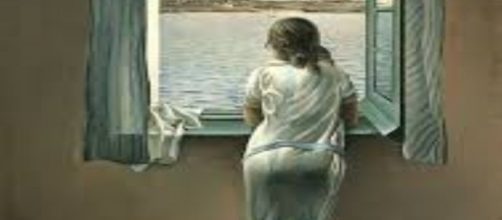A painting by salvador dali of his sister Ana Maria is up for sale at Bonham’s in London next month. and you have to wonder why it’s considered a portrait. You can’t see her face. Instead the view is of her rear end as she looks out a window at some coastline – presumably Catalan, the stretch of land that Dali famously touted as “by far the most beautiful place in the world.” If anything, the painting is a landscape. Either that or it’s a study of a woman’s backside -- a part of the female anatomy that he frequently focused on in his picture-making, as in “Young Virgin Auto-Sodomized by her Own Chastity.”
Bottoms up
The relationship between brother and sister was complicated, according to Dali’s biographer Meryl Secrest, made extra difficult by some pretty serious rifts; although when he made the “portrait” in question, they were on good terms.
Apparently, whether the siblings got along or not, Dali painted his sister a lot and often from her rear. What’s up with that? The Art Newspaper reports that one of his versions was sparked by a photograph in a porn magazine, which led to the scuttlebutt that his interest in Anna Marie was incestuous.
Sibling rivalry
One of their rifts came after publication of his autobiography “The Secret Life of Dali,” which included boyhood memories of “bestial women” and “glimpses of their heavy rumps.” (Buttocks again!) Ana Marie thought her brother’s take on their family life was unfair, so she wrote a book to counter his titled “Salvador Dali as Seen by his Sister” calling him “an old clown.” He balked that she “destroyed the myth of Dali,” that characterizing him as an ordinary human being threatened the basis of his fame.
The scenic route
Meanwhile, back to the so-called portrait of Ana Maria, even Whistler’s painting of his mother – notably titled “Arrangement in Grey and Black” -- shows her face. How much of a non-portrait is Dali’s painting of his sister? He seems to answer that by steering us away from her, to the scenery she’s peering at – unless of course her buttocks are the subject.
I’ve sometimes argued that the background in the portrait “Mona Lisa,” a view of Da Vinci’s beloved hometown of Vinci in Tuscany, is a better painting than the main subject. But at least he doesn’t direct our eyes through Mona’s line of vision to the alpine scenery, and you can see her face. Given Ana Maria’s annoyances with her brother, why didn’t she object to all the rear views? Calling him an “old clown” doesn’t cut it.

